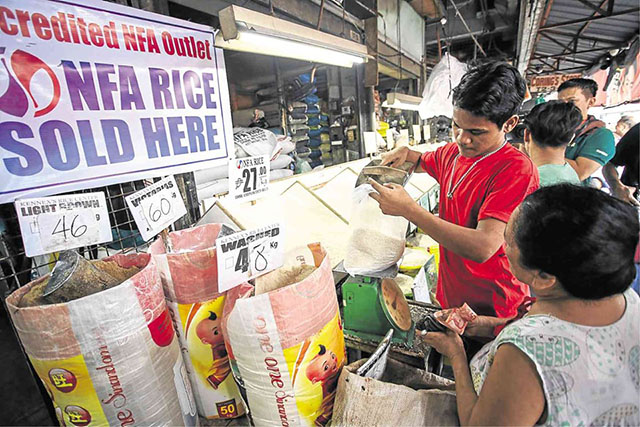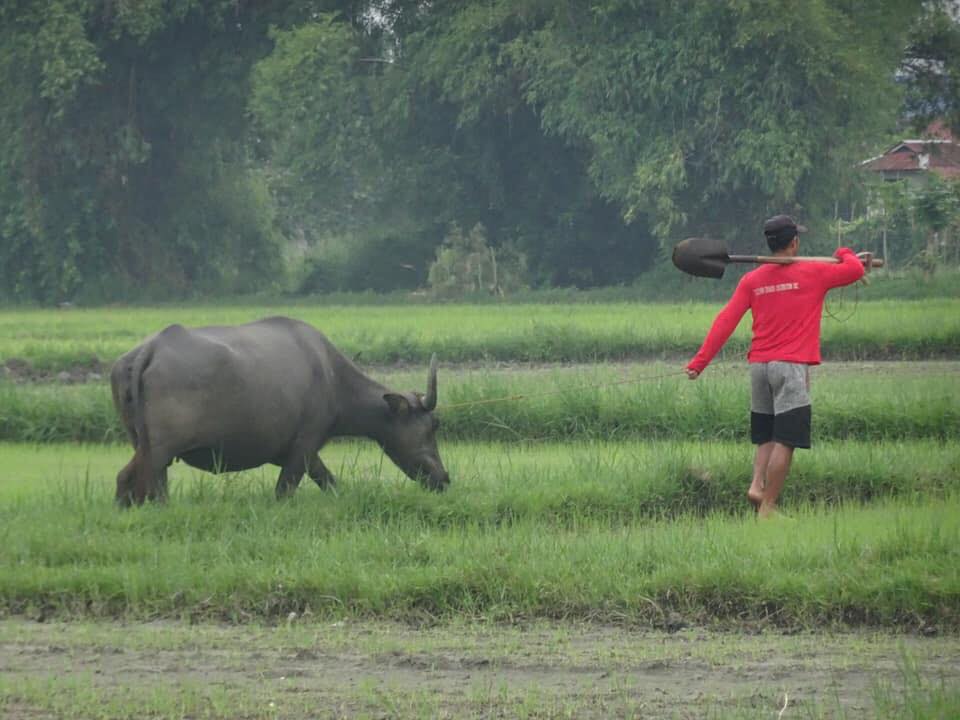Five Months of the Rice “Tariffication” Law: Impact on Farmers, Public Missing
FIVE MONTHS after its passage, the Rice Liberalization Act (RA 11203) is back in the news.

Signed in February, RA 11203 was set to address the shortage in affordable rice by liberalizing rice trade or lifting import limits and imposing tariffs on imported rice. As a safety net for Filipino farmers, PHP10 billion Rice Competitiveness Enhancement Fund (RCEF) was included in the law for equipment, seed production, credit and trainings.
But on July 17, complaints from farmers and cooperatives prompted outgoing Agriculture Secretary Emmanuel Piñol to call for a review of the implementation of rice tariffs, claiming that while the surge in rice imports did cause the farm gate price (price at which farmers sell their produce) to drastically drop, the market price has barely moved, keeping the price on the same level as before. Filipino farmers have suffered huge losses while consumers continue to pay the same high price for the basic commodity. On the following day, Finance Secretary Carlos Dominguez, however, said there is no need for a review as he cited data from the Bangko Sentral ng Pilipinas allegedly showing that rice prices have already fallen.
Despite the large-scale impact of the rice crisis on the public, the call for a policy review was surprisingly underreported. There was not enough news on Dominguez’ statement and analytical reports were relegated to the inside pages or business section.
Media coverage merely relied on the statements of public officials, with little attempt to check the conflicting claims made by farmers’ groups, consumers and government officials. Most reports did not check market prices so as to evaluate the call for the policy review. Neither did analysis point to other reasons why conditions have not changed for farmers or for consumers. Also missing was any attempt to get the views of independent sources among agricultural experts and economists.
CMFR monitored the reporting of the three leading Manila broadsheets (Philippine Daily Inquirer, The Philippine Star, and Manila Bulletin), the primetime newscasts (ABS-CBN 2’s TV Patrol, GMA-7’s 24 Oras, TV5’s Aksyon, and CNN Philippines’ News Night) and selected cable news programs and news websites from July 15 to 22, 2019.
Policy Review
Media reported Dominguez’ statement during the Economic and Infrastructure Forum on July 18, a pre-State of the Nations Address event, when he called the law “among the monumental legislative achievements of this administration,” and denied Piñol’s request for a review.
The importation of rice did increase supply but failed to drive prices down. According to a statement posted by Piñol on his personal Facebook page, the farm gate price dropped to a record low of PHP12/kg from last year’s prevailing farm gate price of PHP20/kg. In contrast, the market price, which was expected to drop by PHP7/kg, has remained almost constant with some areas reporting a drop of only P1-2/kg even with the deluge of imported rice. Some reports did mention Piñol’s statement in the context of Dominguez’s refusal to conduct a policy review.
Most of the coverage failed to recall critical warnings raised against liberalizing the rice trade and how it could impact local rice farmers. Few presented the issue from their perspective. CMFR cheers the exceptions that gave voice to the sector worst hit by the rice “tariffication” law. No one checked with sources about the time needed for the market to respond with positively lower prices of rice for consumers.
Farmers in Focus

An Inquirer report on July 16 looked into the plight of Pangasinan farmers struggling to keep up with rising production costs. Ponciano Onia, a farmer-trader from Balungao town, said the current farm gate price was barely enough to cover the high cost of pesticides and labor. The Inquirer also noted how the lack of rain in recent weeks has resulted in low rice yields, which has also affected farmers’ incomes.
The report also cited Oftociano Manalo, former president of the Pangasinan Federation of Irrigators’ Association, who said the price drop for their crop was caused by the rice “tariffication” law, which opened the country to the unrestricted importation of the cheap rice that has been flooding the local market.
TV Patrol released a report on the rice crisis as part of its “SONAserye” report. It featured the accounts of a housewife from Quezon City who could not afford to buy rice and of a farmer from Nueva Ecija who is losing his livelihood due to the “tariffication” law. The report also cited Nestor Diego of Ugnayan ng Magsasaka at Magbubukid who said that small-scale farmers will not benefit from the government’s aid as provided for in the law. “Ang kailangan ng magsasaka ay ‘yung abot-kaya na pautang para mas may kapital ka sa pagsasaka (The farmers need affordable credit to use as additional capital for farming),” Diego said.
Rice is a basic commodity and its cultivation and trade a major driving force in the economy. The reports on any issue about it should point out the economic implications of the rice crisis and the need for a policy review of the law that is ironically killing the industry it was mandated to help.
Leave a Reply